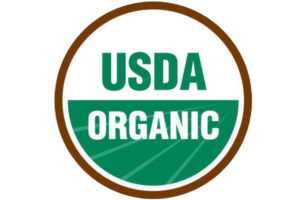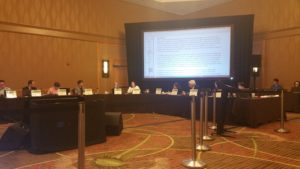
As we wrote earlier this week, OSA is in Denver for the National Organic Standards Board (NOSB) spring meeting. On the agenda was the first-ever proposed change to the regulations governing organic seed since the National Organic Program (NOP) was established in 2002. The regulatory change would require that improvement in sourcing and use of organic seed be demonstrated every year. This change is coupled with improvements to the NOP’s seed guidance document published in 2013. Guidance documents help organic certifiers and their inspectors better understand specific pieces of the standards and how best to enforce them.
The NOSB discussed the proposal today and unanimously voted to send it back to the Crops Subcommittee to make improvements ahead of their next meeting. We support this decision, as we describe in our comments in response to the proposal.
Here’s a recap of the discussion:
NOSB Member Harriet Behar: There were some comments in response to the prposal, and one I saw most often was about trying to get producers to total compliance. Many noted how difficult that is, especially at this time. To push producers to total compliance is impractical and unfair. There’s also the issue of making sure nonorganic seeds used are also GMO-free. Some commenters felt that was a challenge to get that type of assurance for nonorganic seeds.
NOSB Member Dave Mortensen: I have a general question that does not bear on the vote at all, but during the course of this meeting, I’ve heard about the concerns and challenges that organic and non-GMO seed breeders and farmers are facing with contamination from nearby fields that is largely driven by the prevailing system of agriculture. How do we address that? It seems that acknowledging that contamination might be happening is not a very satisfying end point. How do we get into that in a more vigorous way?

Harriet Behar: We are looking at doing another discussion document that will get into our options more. It is a very complicated issue, because to me in the end it comes down to who is going to get punished – the seed breeder, organic farmer, consumer? We are not sure what the threshold of allowance is. We are not sure if that is a solution or not.
NOSB Member Francis Thicke: Also, about a year ago or a little longer, we put together a document listing all of the things that organic producers can do to protect ourselves, which is only so much, and we suggested that our neighbors need to do more.
Harriet Behar: There has also been a lot of discussion about the patent holders and putting some of the responsibility on them. It is not so much that the farmers or the neighbors are at fault, but they have purchased a technology that does not deal with the promiscuity of the product. I do not think there is a lot of will among organic farmers to go after their neighbors for a defective product they have bought.
Join our newsletter, and follow us on Facebook and Twitter, for updates on organic seed topics on the NOSB’s fall meeting agenda (Oct. 31 – Nov. 2, 2017, in Jacksonville, FL).
